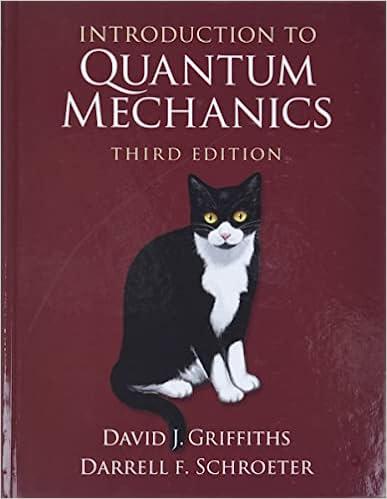Consider a particle of mass m moving in a potential V(x) with period a. We know from
Question:
Consider a particle of mass m moving in a potential V(x) with period a. We know from Bloch’s theorem that the wave function can be written in the form of Equation 6.12.
(a) Show that u satisfies the equation

(b) Use the technique from Problem 2.61 to solve the differential (6.14) equation for unq. You need to use a two-sided difference for the first derivative so that you have a Hermitian matrix to diagonalize:
![]()
For the potential in the interval 0 to a let
with V0 = 20ћ2/2ma2. (You will need to modify the technique slightly to account for the fact that the function unq is periodic.) Find the lowest two energies for the following values of the crystal momentum: qa = -π,-π/2, 0, π/2, π. q and q+2π/a describe the same wave function (Equation 6.12), so there is no reason to consider values of qa outside of the interval from -π to π. In solid state physics, the values of q inside this range constitute the first Brillouin zone.
(c) Make a plot of the energies E1q and E2q for values of q between -π/a and π/a. If you’ve automated the code that you used in part (b), you should be able to show a large number of q values in this range. If not, simply plot the values that you computed in (b).

Step by Step Answer:

Introduction To Quantum Mechanics
ISBN: 9781107189638
3rd Edition
Authors: David J. Griffiths, Darrell F. Schroeter





